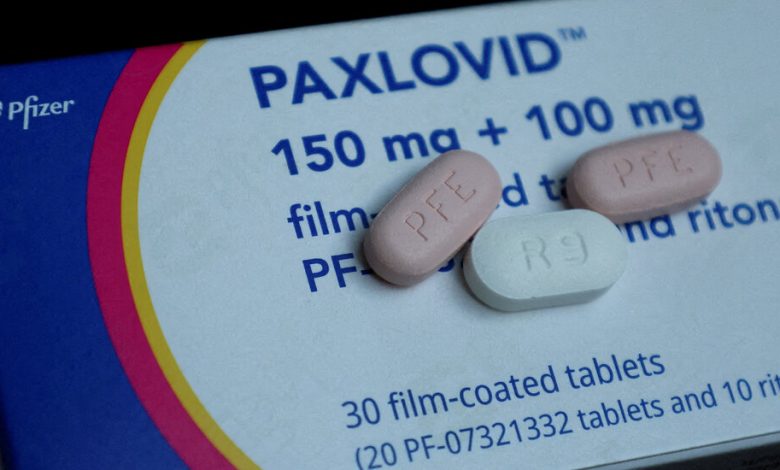What America’s Eating Affects Its Water Supply

More from our inbox:
- Don’t Resist Paxlovid as Covid Rises Again
- Taylor Swift’s Community of Fans
- Replace Harris With Whitmer as the V.P. Candidate

How America’s Diet Is Feeding the Groundwater Crisis
As dinner tables and snack menus feature far more chicken and cheese, farms are expanding where water is scarce.
To the Editor:
Re “America’s Diet Is Feeding a Groundwater Crisis” (“Uncharted Waters” series, front page, Dec. 30):
The world has been making meat basically the same way for about 10,000 years, by feeding crops to animals, so that humans can eat animals.
This method of meat production is inefficient, requiring vast quantities of land and water, and shifting crop production to lower-value crops for animal feed from high-value crops for human consumption.
Plant-based and cultivated meat use far less land and water, and they have a host of other benefits. The Center for Strategic and International Studies released a report in May documenting how these “alternative proteins” can create opportunities for farmers, jobs in the heartland, more choices for consumers and robust export markets.
Like any more efficient production method, these new ways of making meat are a win-win for industry, which is why we’re seeing leadership in these sectors from major meat and food companies including ADM (Archer-Daniels-Midland), Cargill, Tyson, Nestle and JBS.
The C.S.I.S. report also documents benefits to our economic and national security and argues that the government should create favorable policies for these industries, similar to policies that support “pharmaceuticals, clean energy technology and advanced chips for artificial intelligence.”
Bruce Friedrich
Washington
The writer is president of the Good Food Institute, a nonprofit think tank that promotes alternative proteins.
To the Editor:
You know what else besides changing tastes may be contributing to the overtaxing of America’s aquifers? More mouths to feed.
Your story identifies the cause of the water crisis as a “dietary shift” in the country toward more chicken and cheese, which it says has driven a huge acreage expansion of water-intensive crops used for animal feed. But there is not a single mention of population growth.
It’s not just that Americans doubled their per capita chicken and cheese consumption in the past 40 years; it’s that there are more than 100 million additional U.S. residents than there were back then. And the portion of U.S. animal feed that is exported is going to a world population that has increased 80 percent from 1980.
How much of the stress on the country’s groundwater is attributable to the general nutritional needs of a growing population versus its “food choices”? The article never addresses the matter. In fact, the population effect gets little, if any, attention in much environmental reporting, which seems like a conspicuous omission.
Peter Szekely
New York
Don’t Resist Paxlovid as Covid Rises Again

Credit…Wolfgang Rattay/Reuters
To the Editor:
Re “Few Take Paxlovid, Even as Covid Surges Again” (front page, Jan. 5):
I regret that so few of my primary care colleagues prescribe Paxlovid to adults who test positive for Covid.
Drug interactions are easy to manage, usually by temporarily stopping or reducing the dose of the interacting medication. The metallic aftertaste is easy to manage (I advise patients to purchase mints, Life Savers or Tic Tacs when they pick up their Paxlovid prescription).
And the idea that relapse is more common in those who take Paxlovid as compared with those who don’t has been soundly debunked (the risk of relapse is small, whether or not Paxlovid is used).
Primary care providers who are unavailable to patients who need them after hours or on weekends — online comments on the article were replete with stories of patients unable to obtain prescriptions — need to reconsider their choice of profession.
And 48,000 avoidable deaths from Covid, cited in a Paxlovid study that you report on, are not to be taken lightly.
Mark E. Horowitz
Brooklyn
The writer is a family physician.
To the Editor:
While your article accurately identifies barriers to Paxlovid use, it overlooks how pandemic fatigue shapes public attitudes about new Covid treatments. Attributing low use in part to patient wariness overlooks the need for proactive physician engagement and public health outreach.
This outreach should target vulnerable communities directly, such as seniors, the uninsured and people of color. For instance, assisted living facilities and retirement communities could partner with the Centers for Disease Control and Prevention to run awareness campaigns.
Rather than assume that patients will decline, providers ought to start conversations to address hesitancy and falsehoods. Indeed, physicians should proactively address pandemic fatigue and other concerns, while educating patients about Paxlovid’s lifesaving potential.
Cameron J. Sabet
Alexandria, Va.
The writer is a medical student.
Taylor Swift’s Community of Fans
To the Editor:
Re “The Joy of Communal Girlhood, the Anguish of Teen Girls,” by Jessica Bennett (Opinion, Dec. 31):
I couldn’t resist this essay as a die-hard Beyoncé and Taylor Swift fan, a mother of young kids, and someone who remembers viscerally the difficult days of middle school and worries for today’s kids who navigate them amid social media.
Ms. Bennett’s account of watching the Eras movie (which I also watched, riveted, from my couch) rang true. That “perfect window of girlhood” Ms. Swift helps us access is not something only girls can reach. Adults are accessing it, too. It’s a state, as Ms. Bennett notes, of self-knowledge without self-consciousness and of owning imperfections and sharing them freely. It’s being open and vulnerable without fearing (or even realizing) it.
As we get older, notwithstanding the constant oversharing on social media, authentic vulnerability becomes scarce. Ms. Swift’s lyrics, capturing every detail of her ups and downs, transport us back to that place of unabashed imperfection and figuring-it-all-out — and we experience that as a community. The communal fan experience, cheesy though it sounds, helps us overcome today’s obstacles to authentic human connection.
Alicyn Cooley
Brooklyn
Replace Harris With Whitmer as the V.P. Candidate
To the Editor:
Re “The Election No One Seems to Want Is Coming,” by Gail Collins and Bret Stephens (The Conversation, Jan. 9):
I agree with Mr. Stephens that replacing Kamala Harris with Gov. Gretchen Whitmer of Michigan as President Biden’s vice-presidential candidate would be a smart move for the Democratic ticket.
Ms. Harris shows little spark and is a drag on a Biden re-election. She does not present any particular reasons to vote for Mr. Biden.
Ms. Whitmer would. She has been a charismatic governor, standing up to the far right in her state and not taking any nonsense from her political opponents. I believe she would be appealing to many centrists as a future president. She’s someone you can believe in.
Mr. Biden should appeal to Ms. Harris to step aside in the interests of the party and the country, with promises of a significant role — certainly more substantial than what veeps tend to do — in a hoped-for second Biden term.
This idea could be a win-win, especially if Ms. Harris could find her way to proposing it herself for reasons easily explained to her supporters.
Marc Bloom
Princeton, N.J.




